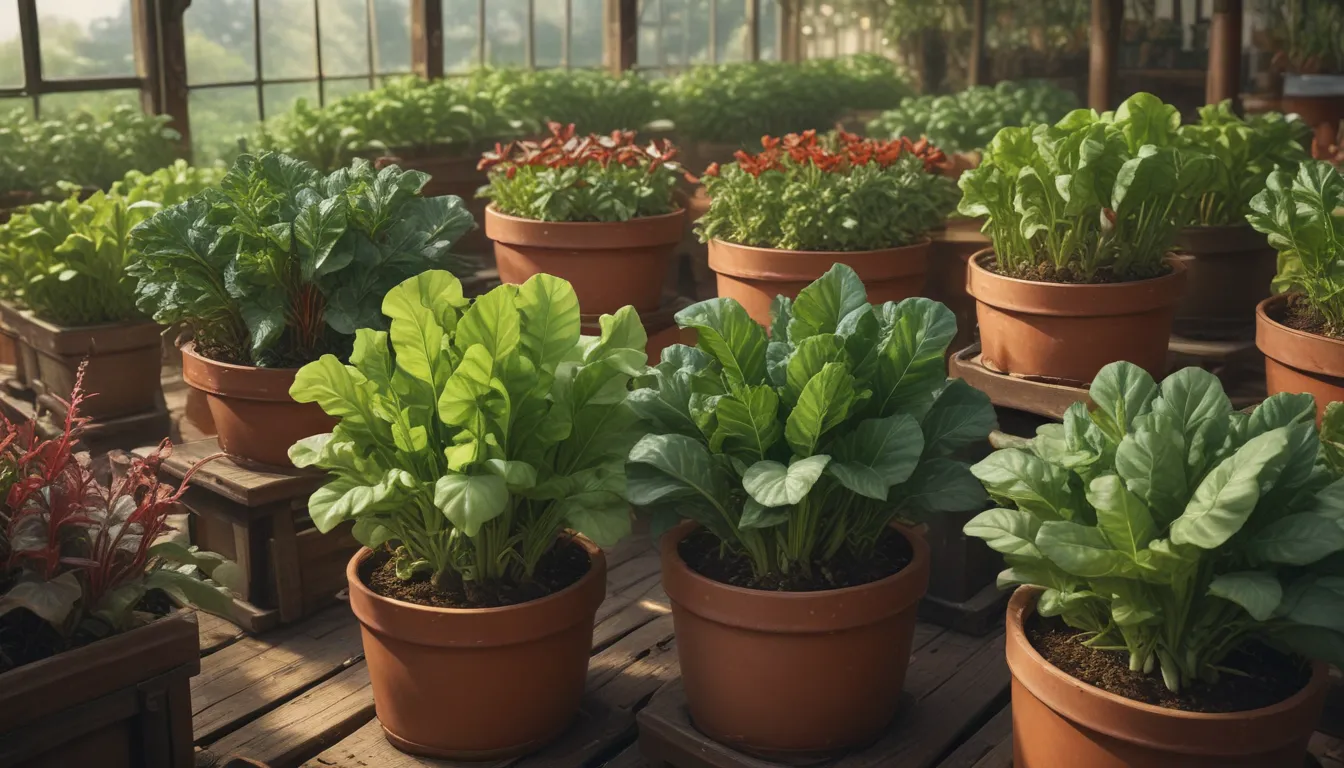The Ultimate Guide to Growing Swiss Chard in Containers

Are you ready to embark on a container gardening adventure with Swiss chard? This versatile and vibrant plant is a fantastic choice for small spaces, patio gardens, or even indoor growing.
In this detailed guide, we will cover everything you need to know to successfully grow Swiss chard in containers. From choosing the right container and selecting your favorite chard varieties to planting, caring for your plants, and troubleshooting common issues, we’ve got you covered.
What You’ll Learn
Let’s dive in and explore the following topics:
- Choosing a Container
- Varieties to Select
- How to Plant
- Container Care
- How to Grow Microgreens
- Troubleshooting Tips
So, grab your potting soil and let’s get started!
Choosing a Container
When it comes to selecting a container for your Swiss chard, a few key factors come into play. Here’s what you need to consider:
- Size: Swiss chard has shallow roots, so a container that is at least 8 inches deep and 12 inches wide should be sufficient. For optimal growth, a five-gallon container per plant is ideal.
- Material: While the material choice is not critical, keep in mind that terra cotta dries out faster than plastic or cement. Ensure your container has proper drainage holes.
- Mobility: Consider the weight of your container, especially if you plan to move it indoors or follow the sun. Plastic containers are lighter, while clay and cement options are heavier.
- Drainage: Adequate drainage is essential to prevent waterlogging. Aim for three to four drainage holes per square foot of surface area at the base of the pot.
For growing microgreens, opt for small trays that are one to two inches deep, wide enough to hold the desired amount of greens.
Varieties to Select
Swiss chard varieties offer an array of colors, flavors, and growth habits. Here are a few top picks for container gardening:
- Barese: Compact and quick-growing, perfect for small spaces.
- Bright Lights: Vibrant mix of colorful stems, ideal for ornamental containers.
- Fordhook Giant: Large variety with heat tolerance, requires a bigger container.
- Magenta Sunset: Stunning magenta leaves for an eye-catching display.
- Orange: Bright orange stalks with deep green leaves for a unique touch.
Choose your favorite chard varieties based on your preferences and space limitations.
How to Plant
Whether sowing seeds or transplanting nursery starts, planting Swiss chard is a straightforward process:
- Soaking Seeds: Soak chard seeds for 24 hours before planting for faster germination.
- Planting: Sow seeds 1/4 inch deep, spacing them 6 to 12 inches apart. Keep the soil moist until germination.
- Transplanting: Place nursery starts 6 to 12 inches apart in well-draining soil.
- Companion Planting: Pair chard with compatible plants like kale, chives, or marigolds for a thriving container garden.
Ensure your plants receive at least four hours of direct sunlight each day for optimal growth.
Container Care
While Swiss chard is relatively low-maintenance, proper care is essential for healthy growth. Here are some container care tips:
- Watering: Swiss chard needs regular moisture, approximately 1.5 inches of water per week. Water at the base of plants to avoid wetting the foliage.
- Soil: Use high-quality potting soil and avoid soil compaction and water retention issues.
- Fertilizing: Consider adding a balanced fertilizer to promote plant growth.
- Harvesting: Cut leaves as needed, allowing the plant to continue producing new growth.
Maintain consistent watering, adequate sunlight, and monitor plant health to ensure vibrant, healthy chard plants.
How to Grow Microgreens
If you’re interested in growing chard microgreens, follow these steps for a quick and nutritious harvest:
- Seed Soaking: Soak chard seeds in cold water for 24 hours before planting.
- Planting: Spread seeds evenly in a seed starting mix, cover with a thin layer of soil, and maintain moisture levels for germination.
- Lighting: Provide four hours of direct sunlight or grow lights daily for optimal growth.
- Harvesting: Snip microgreens once they reach the desired height for a fresh and tasty treat.
Experiment with growing chard microgreens for a fast and flavorful addition to your culinary creations.
Troubleshooting Tips
While Swiss chard is resilient to pests and diseases, here are some common issues to watch out for:
- Leaf Miners: Prevent leaf miner damage by using netting or indoor growing.
- Slugs: Control slugs by eliminating hiding spots and using slug traps.
- Bolting: Prevent bolting by providing consistent moisture and temperatures.
- Pests: Combat aphids and spider mites with water sprays or neem oil treatments.
Stay vigilant and address any pest or disease issues promptly to ensure healthy chard plants.
Conclusion
Growing Swiss chard in containers is a rewarding experience that anyone, regardless of garden size, can enjoy. Whether you’re a beginner or seasoned gardener, container gardening offers endless possibilities for cultivating fresh, homegrown produce.
So, if you’re ready to embark on a Swiss chard growing adventure, grab your favorite container, some quality potting soil, and start planting. With proper care and attention, you’ll soon be enjoying vibrant and nutritious chard from your very own garden.
Have you grown Swiss chard in containers? Share your experiences in the comments below!
For more gardening tips and guides, explore our additional resources on growing Swiss chard for fall harvests and planting and caring for Swiss chard in your garden.
Happy gardening!





